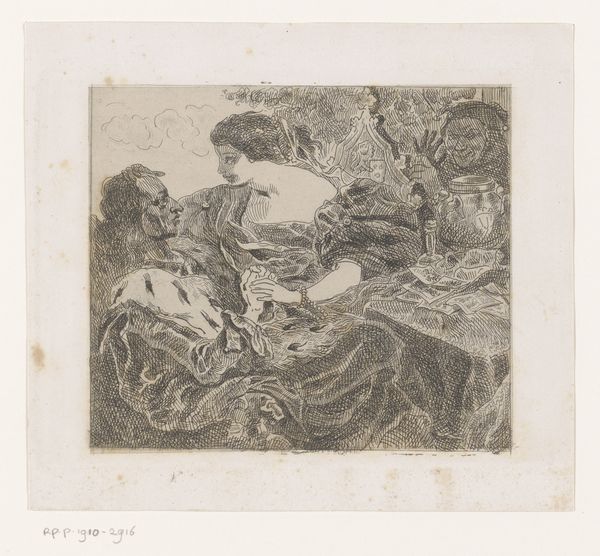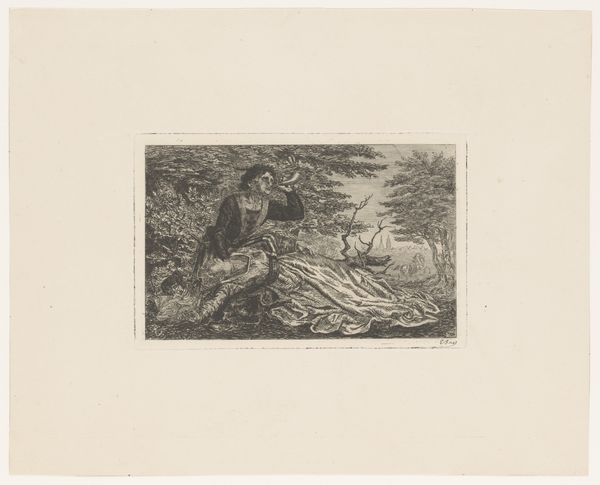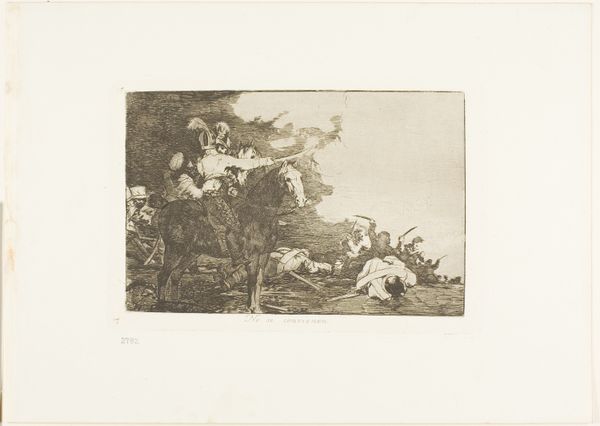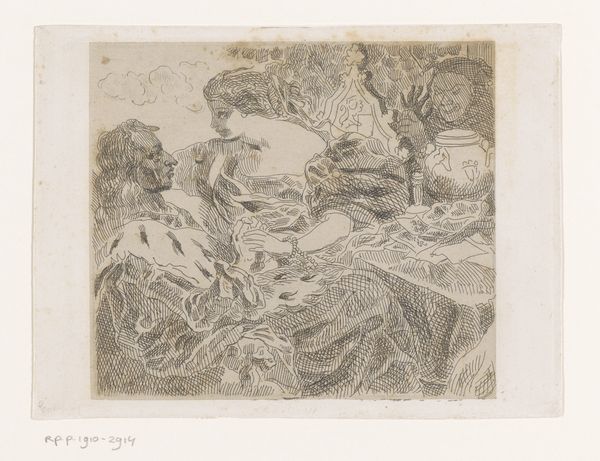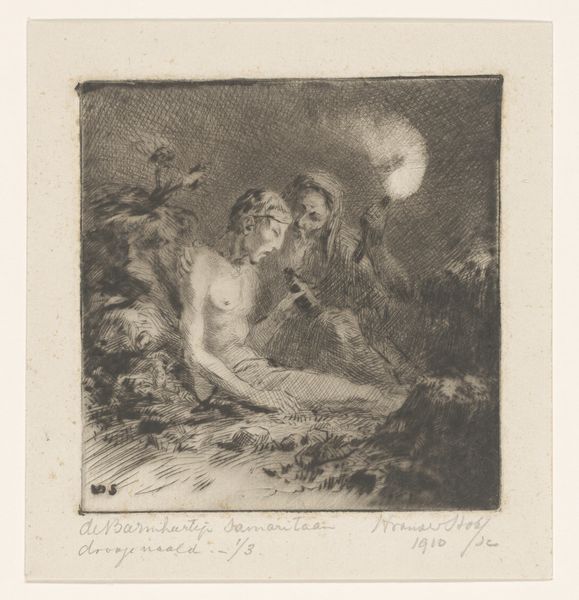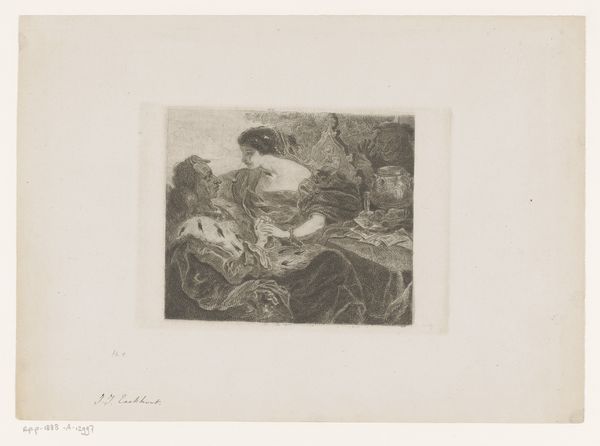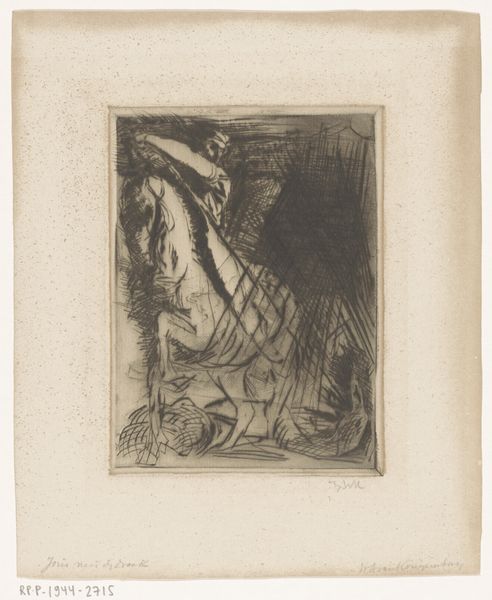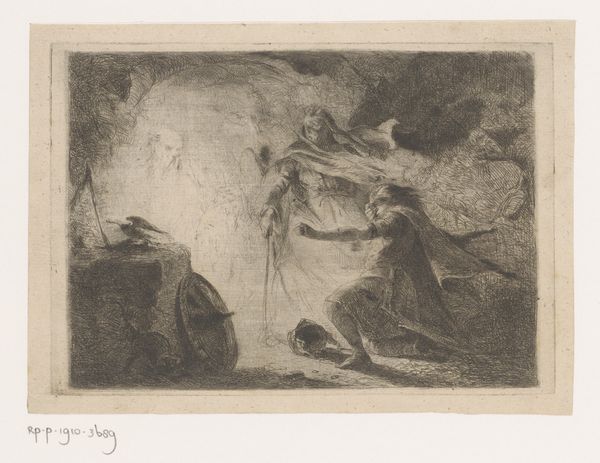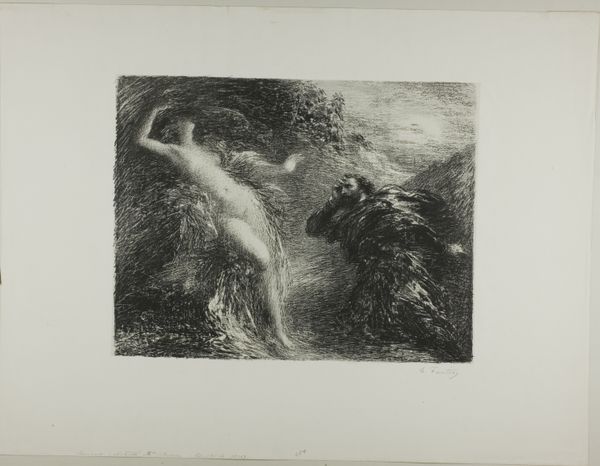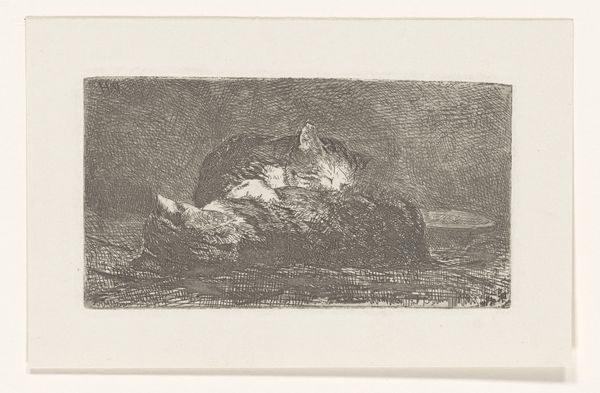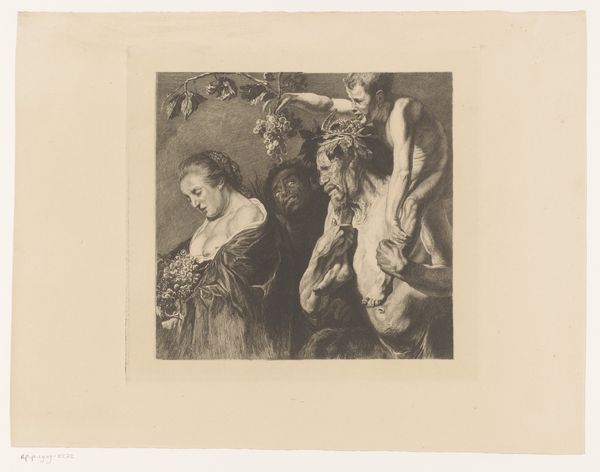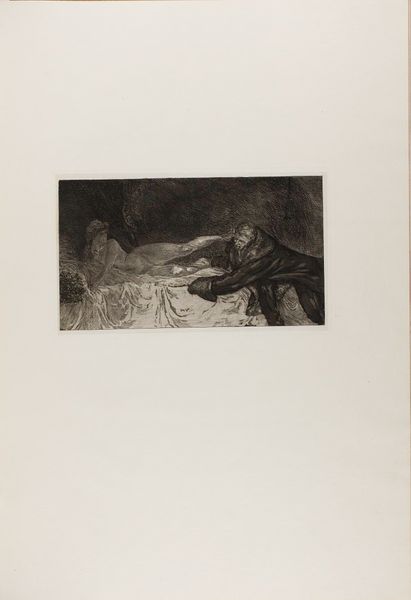
print, etching, engraving
#
portrait
# print
#
etching
#
charcoal drawing
#
intimism
#
genre-painting
#
history-painting
#
engraving
Dimensions: height 144 mm, width 193 mm
Copyright: Rijks Museum: Open Domain
Editor: We’re looking at "Isabella aan tafel bij Karel VI" by Jacob Joseph Eeckhout, created sometime between 1803 and 1861. It's an etching and engraving on paper. I'm immediately struck by the…decadence of the scene. There's a clear power imbalance, almost like a tableau vivant. What historical context might be influencing its creation and interpretation? Curator: The representation of Isabella of Bavaria with Charles VI, King of France, here really distills a moment ripe for historical revision. Consider when this print was made—between 1803 and 1861. What social narratives might Eeckhout be engaging with or pushing back against at this time regarding gender, power, and national identity? Editor: It seems to depict a narrative weighted towards moral decay... almost a critique of leadership and courtly life? Curator: Precisely! Ask yourself, who is this print for? Was it meant for popular consumption? How would it have been viewed in relation to the political climate of the time, particularly given France’s already complex and romanticised past? Remember, prints were often vehicles for political and social commentary. The setting, too, contributes: what does it convey about attitudes toward royal institutions at this moment in history? Editor: So, the "intimacy" aspect described could be ironically portraying a commentary on political corruption? Curator: It certainly challenges conventional interpretations. This etching becomes more than a simple historical painting. It becomes an object within its own historical moment. This raises fascinating questions. The artist, his setting... How might his work function within and comment on these very forces? Editor: This shifts my understanding entirely; seeing it through the lens of social commentary reveals an incredible depth beyond the surface level. Curator: Indeed! And thinking about that intersection – where personal depiction meets public reception and, eventually, political sentiment – provides key insights into artwork like this.
Comments
No comments
Be the first to comment and join the conversation on the ultimate creative platform.
